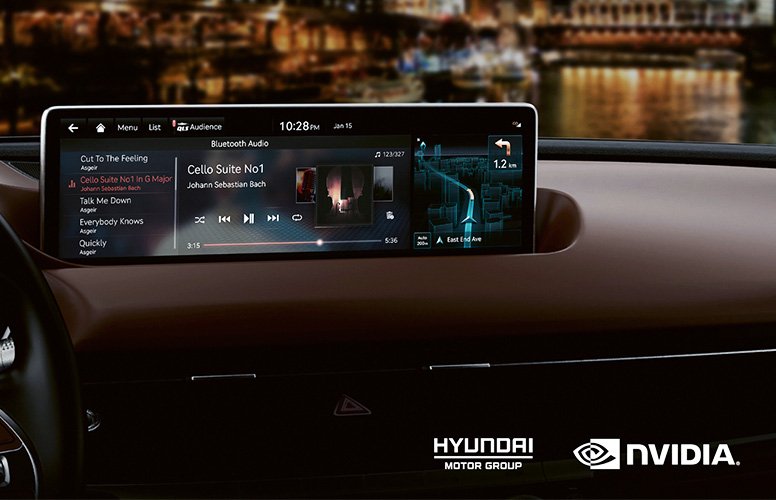
Hyundai has launched a new OS for its connected cars powered by NVIDIA’s powerful DRIVE platform.
The new operating system, ccOS, will be rolled out across Hyundai Motor Group – including models from the company’s Kia and Genesis sub-brands – and will be in all vehicles from 2022 onwards.
ccOS was developed in-house by Hyundai in technical cooperation with NVIDIA. The company says all future vehicles “from entry-level to premium” will feature infotainment systems powered by DRIVE as standard.
Tapping into DRIVE’s power, ccOS will deliver “continuously enhanced in-vehicle AI user experiences” for customers.
The latest version of DRIVE, the AGX Orin, delivers 200 TOPS of performance and is designed to handle the large number of applications and DNNs which run simultaneously in autonomous vehicles. Hyundai is yet to announce what hardware any future vehicles will be based on.
“At Hyundai Motor Group, we are committed to delivering greater value, safety, functionality and enjoyment over the lifetime of the car,” said Paul Choo, Senior Vice President of Electronics Tech Unit at Hyundai Motor Group.
“The NVIDIA DRIVE platform is proven – it is scalable, energy-efficient and has the performance to support our next generation of software-defined vehicles.”
The automotive giant has revealed that ccOS will use NVIDIA’s software frameworks to achieve four goals:
- ‘High-performance computing’, using NVIDIA GPUs to process large amounts of data inside and outside the vehicles and optimize system performance to support advanced IT technologies, such as deep learning.
- ‘Seamless computing’, which provides uninterrupted service regardless of the vehicle’s online or offline state. The vehicle connects with the surrounding infrastructure and smart devices to bring the user experience from external devices into the vehicle environment.
- ‘Intelligent computing’, providing intelligent customized services by properly identifying the driver’s intentions and condition.
- ‘Secure computing’, protecting the system by monitoring in-vehicle and external networks and isolating data associated with vehicle safety.
“NVIDIA brought consumer electronic functionality and a graphics-rich user interface to infotainment systems more than a decade ago,” said Ali Kani, Vice President of Autonomous Vehicles at NVIDIA.
“Now, we are once again transforming these systems through the power of AI, helping Hyundai Motor Group increase safety and value, along with enhancing customer satisfaction, throughout the lifetime of the vehicle.”
Hyundai says it will reveal more specific details about ccOS capabilities alongside future announcements regarding specific vehicles.
Interested in hearing industry leaders discuss subjects like this? Attend the co-located 5G Expo, IoT Tech Expo, Blockchain Expo, AI & Big Data Expo, and Cyber Security & Cloud Expo World Series with upcoming events in Silicon Valley, London, and Amsterdam.






